 Religion
Religion  Religion
Religion  Weird Stuff
Weird Stuff 10 Horrifying Final Destination-Like Accidents
 Movies and TV
Movies and TV 10 Music Biopics That Actually Got It Right
 History
History 10 Momentous Events That Also Occurred on July 4th
 Animals
Animals 10 Times Desperate Animals Asked People for Help… and Got It
 Movies and TV
Movies and TV 10 Movie Flops That Found Their Way to Cult Classic Status
 History
History 10 Things You Never Knew About Presidential First Ladies
 Movies and TV
Movies and TV 10 Zombie Movies That Will Actually Terrify You
 Humans
Humans 10 Times Scientists Were Absolutely Sure… and Absolutely Wrong
 Our World
Our World 10 Pivotal Moments for Life on Earth
 Religion
Religion 10 Innovations and Discoveries Made by Monks
 Weird Stuff
Weird Stuff 10 Horrifying Final Destination-Like Accidents
 Movies and TV
Movies and TV 10 Music Biopics That Actually Got It Right
Who's Behind Listverse?

Jamie Frater
Head Editor
Jamie founded Listverse due to an insatiable desire to share fascinating, obscure, and bizarre facts. He has been a guest speaker on numerous national radio and television stations and is a five time published author.
More About Us History
History 10 Momentous Events That Also Occurred on July 4th
 Animals
Animals 10 Times Desperate Animals Asked People for Help… and Got It
 Movies and TV
Movies and TV 10 Movie Flops That Found Their Way to Cult Classic Status
 History
History 10 Things You Never Knew About Presidential First Ladies
 Movies and TV
Movies and TV 10 Zombie Movies That Will Actually Terrify You
 Humans
Humans 10 Times Scientists Were Absolutely Sure… and Absolutely Wrong
 Our World
Our World 10 Pivotal Moments for Life on Earth
10 Things That Aren’t As Old As You Think
We often talk about how ancient civilizations were more advanced and more civilized than we give them credit for. And that’s partially true. Plenty of examples of objects or traditions that we consider modern have been around for hundreds, even thousands of years. But this is a two-way street. We might be inclined to believe that everything around us has some kind of ancient origin, yet some things are actually a lot newer than you’d expect.
10Iron Maidens

The iron maiden is definitely responsible for one thing: giving its name to one of the greatest metal bands ever. As far as being used as a torture device, though—that’s a bit iffier. It is almost certain that people have been tortured and killed in such devices, but this happened more recently than we think. One of the devices was found in the possession of Uday Hussein, for example. However, no evidence suggests that they existed during the Middle Ages.
Some historians credit the creation of the iron maiden to 18th-century German philosopher Johann Philipp Siebenkees, who wrote of a 16th-century man executed using this ghastly method. However, those same historians consider Siebenkees’s tale a hoax or some kind of philosophical statement, not a true historical account.
Even so, his story came at a time when people were quite obsessed with medieval artifacts, so genuine iron maidens were soon built and used as displays in exhibits. The most notable iron maiden was found at the Royal Castle of Nuremberg. It was sold to the Earl of Shrewsbury in 1890 and went on tour in Europe and America. The original was destroyed during World War II, but a copy is still in a museum in Bavaria.
9Black Belts
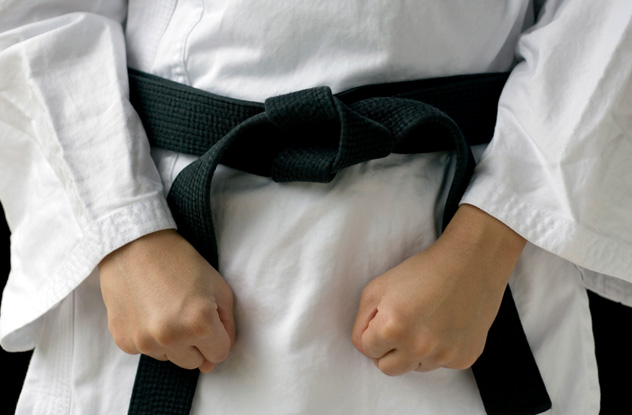
There are plenty of martial arts with ancient origins. There are also many customs and elements of martial arts that have been around for a long time. However, the most iconic aspect of any martial art, the black belt, is not one of them.
The belt has only been around for 100 years or so, being invented by the creator of Judo, Kano Jigoro, in the 1880s. At the same time, he also created the Judo ranking system with dan levels for advanced students, and he used colored belts called obis to denote their skill. Before this, fighters were generally awarded scrolls or certificates to attest to their achievements. His system proved very popular, which is why it is implemented by most modern martial arts today.
Thanks mostly to Hollywood, misconceptions about black belts are plentiful. A black belt does not necessarily make you a master. Not even close. Originally, Kano used the black belt to signify the completion of the first step of training. Modern black belts can deem you no more than an advanced student. There are 10 dan levels for most martial arts. A first-level and a 10th-level dan can both wear black belts, but the difference in skill between them is significant.
Due to their huge popularity, many martial arts schools promise a black belt in just a few years of training. That is how you get the myth of 10-year-olds who need to register as lethal weapons.
8Bushido
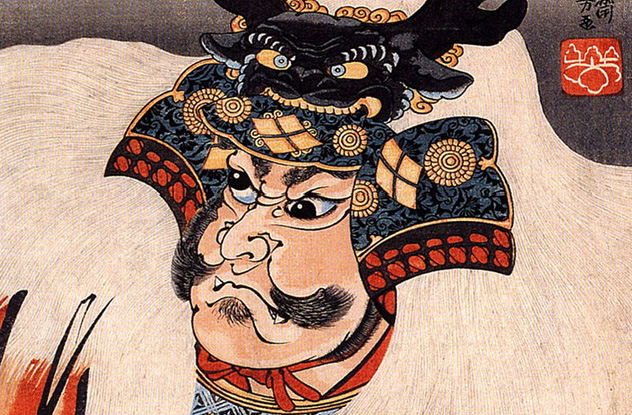
Literally meaning “way of the warrior,” bushido is supposed to be the ancient code of the samurai, detailing the principles and moral values by which samurai warriors live their lives. According to the code, a samurai must personify seven virtues—justice, courage, benevolence, politeness, truthfulness, honor, and loyalty. However, all of this didn’t enter into common usage until Nitobe Inazo wrote his book Bushido: The Soul of Japan in 1899. Inazo also popularized the idea of seppuku—suicide by disembowelment for a dishonored samurai.
Don’t let the book’s name fool you. Despite being Japanese, Nitobe wrote the book in English while traveling in America. It then became very popular when it was endorsed by President Teddy Roosevelt, and only then did it get translated and sold in Japan.
That’s not to say that bushido, both as a word and as a concept, didn’t exist before Nitobe’s book. Ever since samurais existed, there had been an idea of a code inspired by Buddhism and Confucianism. However, it wasn’t thoroughly outlined and didn’t include elements that we now firmly associate with the samurai. As far as the word itself, “bushido” was not used in Japanese literature until the 16th century despite samurais having existed for over 500 years by that point.
7Ouija Boards
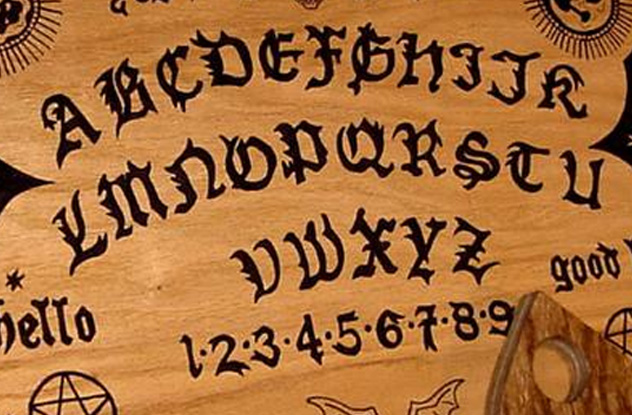
A staple of the horror genre, the Ouija board is the tool that bridges our world with the world beyond and allows us to communicate with the dead. Or maybe it’s just a 100-year-old board game.
We might regard it as some kind of ancient mystical device, but actually, it is so non-ancient that it’s still under trademark by Hasbro. It was created in 1892 by designer Elijah Bond, who sold it to William Fuld in 1901. Now regarded as the “father of Ouija,” Fuld popularized the game and promoted it as a novelty. He sold the patent in 1966 to Parker Brothers. So the Ouija board is wholly owned by the same people who make Monopoly, Risk, and Trivial Pursuit.
Despite being a trademark, “Ouija” is used nowadays to refer to any kind of talking board or planchette that uses automatic writing. It’s also been firmly associated with devil worship or spirituality, despite Hasbro’s insistence that it’s just a board game. The automatic writing is simply done by the ideomotor effect—people moving the indicator unconsciously.
Part of the blame goes to Pearl Curran, a popular 20th-century spiritualist who began using the Ouija board as a tool for divination. However, the satanic reputation of the Ouija board was firmly established once it was featured prominently in The Exorcist.
6Tarot Cards
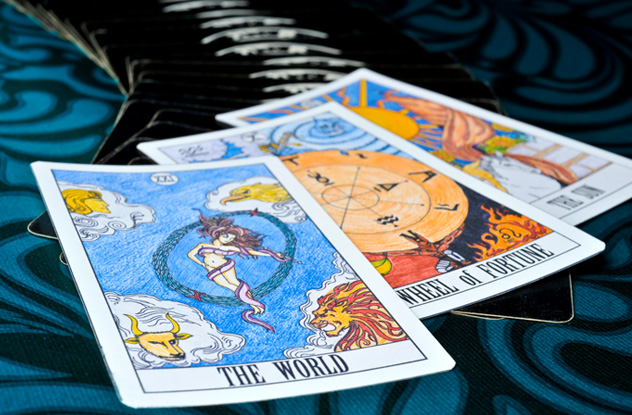
Tarot cards are another allegedly ancient form of mysticism. To be fair, tarot cards are fairly old—from the 15th century—although they are still not as old as regular playing cards. What is new about them is the spiritual component used for divination. Originally, a tarot deck was simply a regular deck with 22 additional trump cards known as trionfi, used to create new games called carte da trionfi.
The idea of using tarot cards for divination didn’t come until hundreds of years later, and there are several Frenchmen who are responsible. First, Pastor Antoine Court de Gebelin. He published a nine-volume work titled The Primeval World in the 1770s, linking symbols used for tarot cards (just the symbols, not the cards themselves) with symbols of ancient Egypt. A contemporary of his, Jean-Baptiste Alliette, worked as an occultist under the stage name Etteilla and used tarot cards for divination. He also created a special deck called The Book of Thoth, which became the first tarot deck specifically intended for divination.
5Kilts
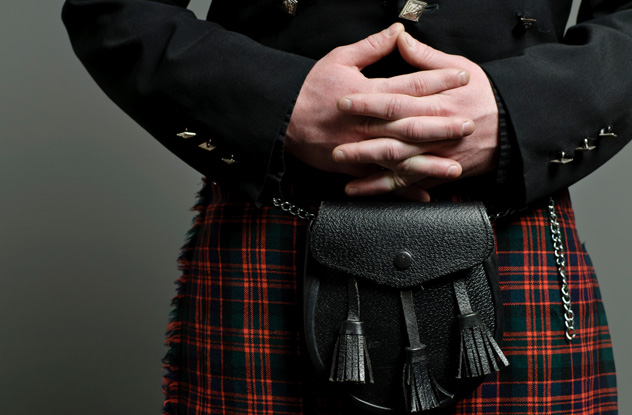
Scots and kilts go hand in hand, and most of us expect that it’s been that way since the beginning of time. At the very least, the Scottish surely had them in early medieval times during the days of William Wallace.
Actually, despite what Braveheart taught us, the kilt didn’t appear at all until about 300 years after Wallace. And the version we are familiar with today wasn’t around until the 18th century.
The kilt made its first appearance in the 16th century, but it was very different from the modern version. Now referred to as the great kilt, it was a full-body garment that covered both upper and lower halves. The upper half of the kilt could be draped over the shoulder like a cloak or worn over the head like a hood. This was the only type of kilt used for a couple hundred years.
Sometime during the early 18th century, Englishman Thomas Rawlinson decided that the standard kilt was too cumbersome to wear while working, so he came up with the small kilt. It was just the lower half of the great kilt and resembled the kilt we all know today. He went into business with Scottish chief Ian MacDonell, who liked Rawlinson’s idea and also started wearing the small kilt. Because they were the head honchos, all of their employees started wearing it as well, and its popularity spread throughout Scotland.
4Olympic Torch Relay

The Olympic flame is the most enduring symbol of the Olympic games. It traces its roots back to ancient Greece, when it supposedly kept burning throughout the duration of the games to commemorate Prometheus stealing fire from the gods for mankind.
Fast-forward to the inception of the modern Olympic games, and the flame was nowhere to be found initially. It wasn’t until the 1928 Summer Olympics in Amsterdam that the emblem was brought back. However, something was still missing—the torch relay, in which representatives carry the torch from Greece throughout several countries, passing it from one person to another until it finally reaches the Olympic host. We might think that this has some kind of pagan roots or that it was a tradition during the ancient Olympics, but it didn’t exist until it was introduced during the 1936 Olympics in Berlin . . . by the Nazis.
Hitler thought the Olympics would be a great opportunity to show Aryan supremacy to the rest of the world. The torch relay was supposed to add a sense of myth and wonder to the event. It took place over a 12-day period and was even turned into a film named Olympia.
3Crossword Puzzles

Crossword puzzles are so straightforward in terms of rules that it seems any ancient civilization could have been responsible for creating them. And if you count any kind of game where you have to guess words using various rules, then sure, crosswords are probably ancient. However, if you are referring to an actual crossword puzzle (words down and across, black squares, hints for every word), then you may be surprised to find out that it’s only 100 years old.
Arthur Wynne is the man who gets the credit for inventing the crossword puzzle. The Englishman from Liverpool immigrated to the US and became the editor for the newspaper the New York World. He published the first crossword puzzle on December 21, 1913. It took about a decade until other newspapers followed his lead. From then on, though, it wasn’t long before the crossword became a standard component to almost every paper.
While Wynne himself was the first to admit that his creation had very old origins, his remains the first official crossword puzzle ever created. He only made it because he had some empty space to fill in his newspaper. He originally called it a word cross. It was only due to a typesetter error that the words got switched around, and we got the crossword.
2Cardiopulmonary Resuscitation

More commonly known as CPR, cardiopulmonary resuscitation is the default move you see in every movie when someone is unconscious. It looks so easy in the movies—just compress the chest and breathe into the mouth. And though the actual process is rather different from how it’s often portrayed, it seems that such a simple yet efficient technique must have been used for centuries, even thousands of years, right? Nope—it’s been around for less than 60 years.
It wasn’t until the 1950s that both mouth-to-mouth ventilation and closed-chest compression were shown to be effective for people going into cardiac arrest. Then, in 1960, Dr. James Elam and Peter Safar come up with the modern CPR technique. Since then, five national medical conferences have been held to update the CPR method based on new information and medical advances.
Certainly, various resuscitative efforts existed before CPR. The first modern organization founded specifically to deal with sudden death was the Society for Recovery of Drowned Persons in Amsterdam in 1767. From here, the organization quickly spread to London, where it became the Royal Humane Society. They had some good ideas, such as using bellows to deliver air into the body, but they also had some weird ones. One, in particular, advised would-be rescuers to blow tobacco smoke up the victim’s anus in an attempt to irritate the intestines.
1Chastity Belts

We mentally put chastity belts in the same category as iron maidens. We believe them to come from medieval times, but they are actually more modern, and they weren’t actually used for the purpose we believe.
According to myth, chastity belts date all the way back to the Crusades. Knights who left to fight would make their ladies wear them to ensure their faithfulness. The myth itself is only a few centuries old, as are most chastity belts.
Although they are occasionally touted as medieval devices, chastity belts are forgeries from the 18th and 19th centuries built as curiosities to shock and intrigue. Some references to such devices date back further, but they are all anecdotal evidence. We have nothing to suggest that chastity belts were actually built at the time, let alone used.
The purpose of chastity belts isn’t well established either. When the term was used during the 16th century in Renaissance poetry, it was intended merely as a metaphor for purity and fidelity, not as an actual physical device. Even so, this probably inspired the construction of genuine chastity belts later on during the 19th century, but they were intended as anti-masturbatory devices for children. Later on, versions for women were built, supposedly to prevent sexual abuse by men in the workplace. Nowadays, modern chastity belts are reserved almost strictly for BDSM.
*Insert shameless Twitter plug here*








